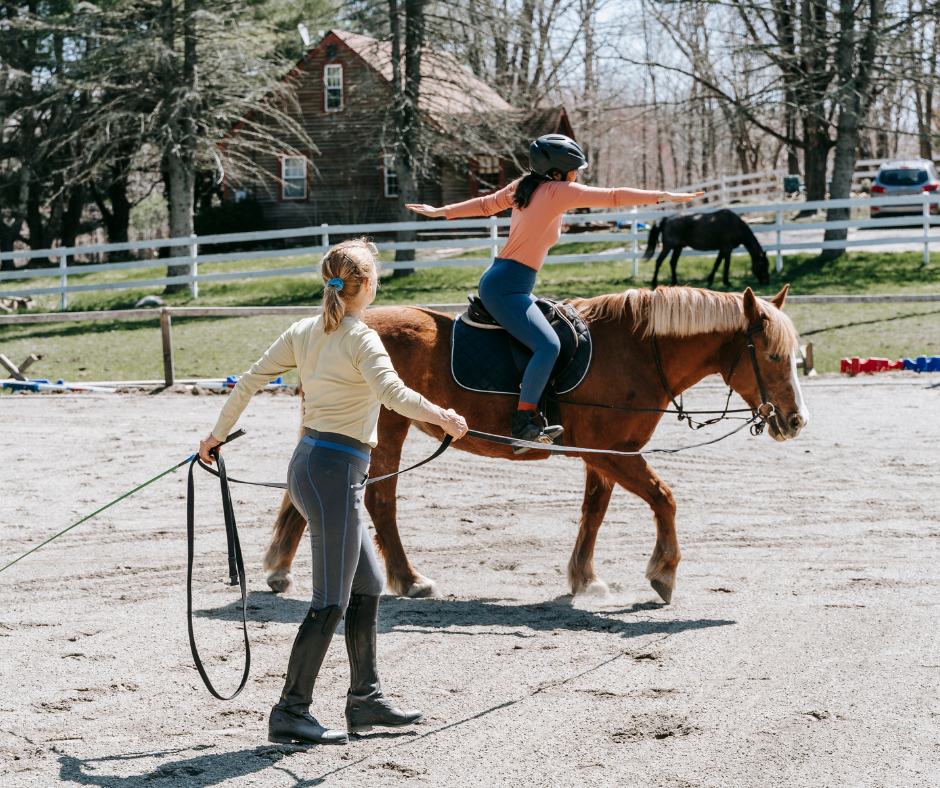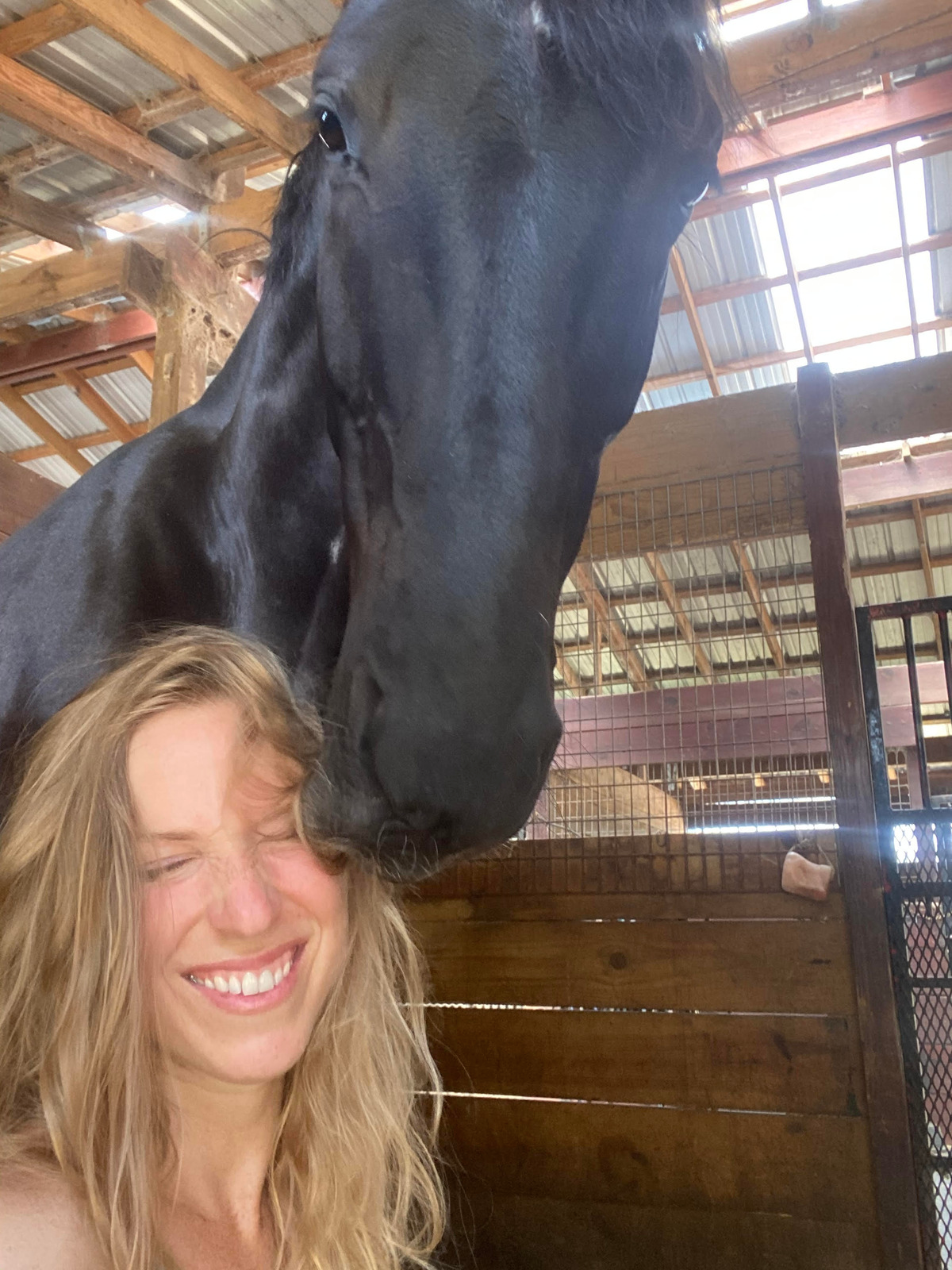Instructor Tips for the Beginning Rider – First Lesson
I have been teaching horseback riding lessons since I was old enough to bark instruction to my friends growing up and riding with me on a horse farm in rural Florida. My mother was also a horseback riding instructor, and I watched her teach countless lessons to students of all ages and sizes. Then, as I increased rank as a United States Pony Club member a stronger and stronger emphasis was placed on accurately interpreting my ride and the rides of others. I had lots of practice teaching as a teenager during the various summer and winter camps hosted by my barn, and I worked as a camp counselor helping to teach both mounted and unmounted skills to the students.
With all of this under my belt I felt like I had a pretty firm grasp of the methods needed to secure a new rider, but with my new position as assistant trainer as Horizons East Show Stables I am learning so many new and insightful ways to help students develop strong foundations! Samantha Lanzone, owner of Horizons East and top trainer has been pumping out winning riders for the past 20 years and it shows. She has created a very specific regimen to be followed by new riders which has proven to be quite successful over the years. She really should write a book and maybe she will one day, but as we are all battling days with not enough hours in them, I will resort to describing some of the most useful tricks I’ve learned here in this blog.
Lets start with most basic first. Upon mounting a horse and once the stirrups are properly adjusted, it is important for the new rider to find their correct position. At Horizons East, we do this while the horse is standing in halt. The rider practices the two-point position for 5 seconds, and then does 10 posts where they practice landing ever so softly on the horse’s back. The instructor stands by the rider’s side to ensure that their legs and torso maintain correct positions. I help the rider to properly adjust the hip angle, hand position, and back as needed while ensuring that their heels are down and not swinging front or back as they switch from posting to two point. This is much easier said than done, and often it is useful to physically hold the rider’s leg in the correct position so that they can feel it properly and learn the muscle memory required to prevent it from swinging, which causes loss of balance. This should be repeated by the rider every time they come for a lesson until they are able to hold their leg still during this exercise.
Next, I like to practice balancing and stretching, which helps the rider to develop independent hands, seat, and leg. Ask them to bend down at the waist to touch both toes, reach forward and touch the horse’s ears, and back to touch the base of the horse’s tail. All the while, remind them to maintain the leg position found in the preceding two-point/posting work. Once they finish stretching, it is time to explain the hand/rein connection and how to effectively shorten reins, ask for a downward transition (walk to halt), and how to effectively steer. It is so much more precise than pull back to stop and pull left/right to turn a specific direction.
I ask the rider to firmly grasp the end of the reins in their hands (holding reins properly of course) and pretend like they are the horse’s mouth where the reins connect to the bit. Then I take hold of the reins closer to the horse’s mouth and pretend that I am the rider (there is slack between the actual bit and where I am holding the reins so there is no contact on the horse’s mouth at this point). I demonstrate to the new rider what contact actually is (between their hands and mine) and warn to never exert more pressure than that on the reins unless they are asking for a downward transition (save half halts for another day). I demonstrate how to properly ask a horse for a downward transition using short but firm pulls against the reins in the riders hands, immediately followed by a release from pressure. I want all new riders to understand the flaw of a consistent pull on the horse’s mouth with no release from pressure, and I explain how this can frustrate the horse and eventually cause bad habits like head tossing, pulling reins out of hands, and leaning into the riders hand (the horse becoming heavy on the forehand).
Once the rider develops an introductory feel for the reins and the horse’s mouth I explain turning and encourage new riders to use an opening rein downward to their knee. For the first several lessons, keep it simple and don’t overwhelm a new rider with the various rein aids, stick with one and eventually build off of it. The opening rein is a bit more forgiving as it encourages riders to keep hands low rather than lifting them over the belly button when turning, and can still be effective with slightly longer reins. Explain the importance of a lifted and focused gaze in the turn, and talk about what looking down does to the upper body. It slouches the shoulders, and tilts the rider’s center of gravity forward, which is often the first step to unbalancing the new rider and can lead to a fall.
Shortening the reins is something that new riders will need to practice quite frequently throughout their ride. Any time you ask the rider to steer or halt, they probably need to first shorten their reins. Because the horse’s mouth is so delicate, I use a bridle over the halter for new riders, and always use clip on reins that I attach to the corners of the halter rather than directly to the bit. This ensures that any mistakes from the rider (common ones include using the reins to help balance, steady pull for no reason, sharp accidental yanks or jars on the reins), will not upset the horse or damage their sensitive mouth.
A new rider’s first lesson should be primarily on the lunge line to ensure adequate control and give the trainer close access to fix anything done incorrectly by the rider (or horse for that matter). Habits develop very quickly during the first few rides, so practice everything covered in this post on the lunge line and immediately fix any errors you see such as leg swinging forward or back, incorrect hip angle, sitting to heavily in the saddle, and improper shortening of the reins (just to name a few). If you follow these guidelines your new rider will quickly develop the strength, balance, and tactfulness to continue improving and you will be able to add more challenges in your upcoming lessons. Stay tuned for my next post, covering more skills to practice with the beginner rider.





Leave a Comment